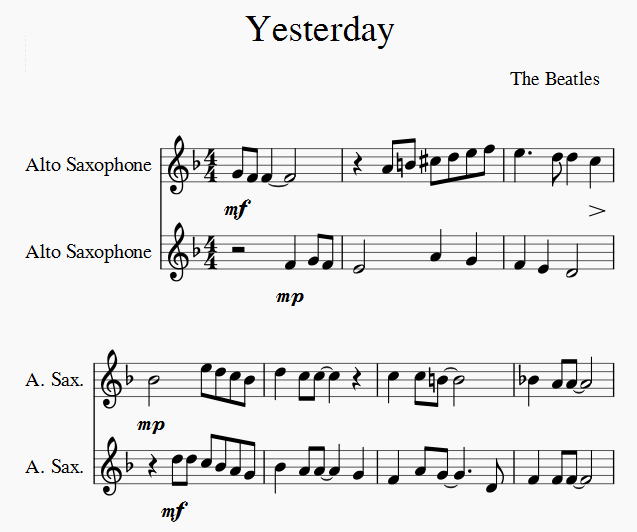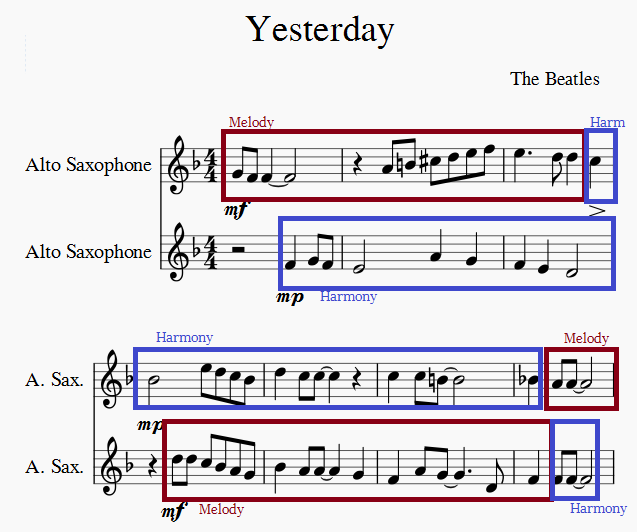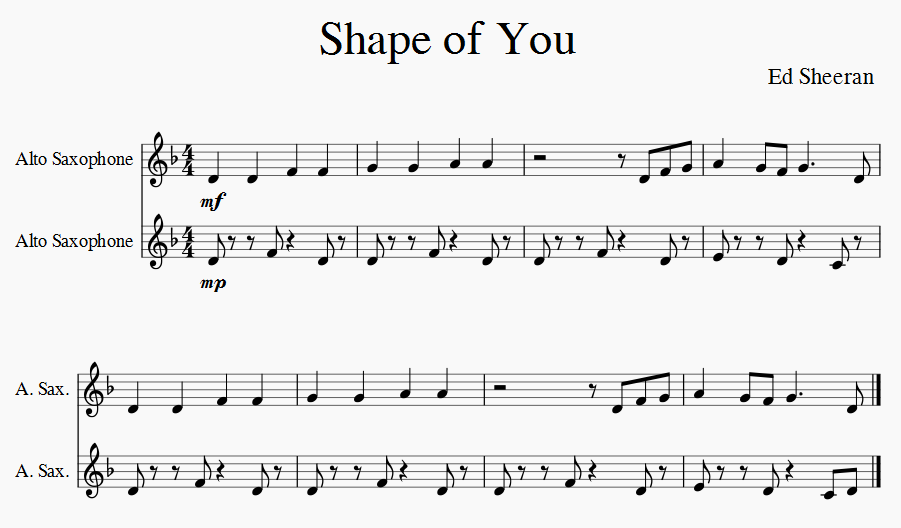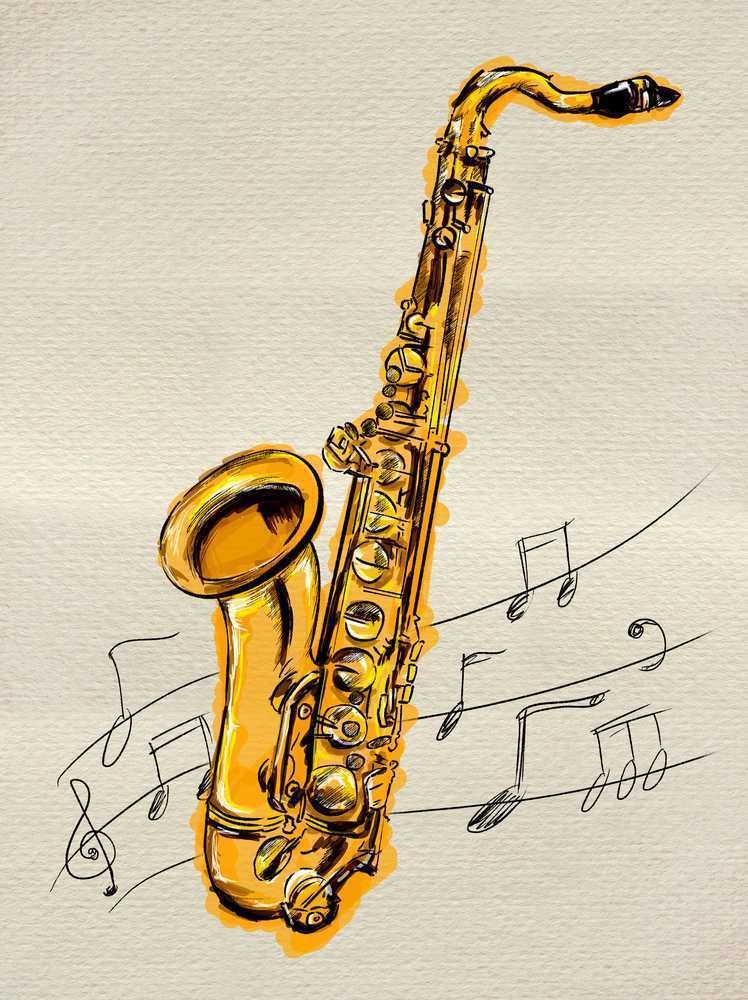When I first started taking saxophone lessons, my teacher concluded every lesson by having us play some duets. Saxophone duets were built in to the lesson template. Each lesson would almost always be the same exact format: scales, then solo repertoire, then duets. I figured duets were just the fun part of the lesson; the part that would actually keep me interested in playing the sax. You gotta end the lesson with the fun stuff. Scales were boring, solo repertoire was often tedious, but duets were always fun.
Now that I have more experience both as a performer and as an educator, I realize that saxophone duets are so much more than just “the fun part of the lesson.” There are so many things that you can learn from playing saxophone duets. Saxophone duets have a multitude of musical benefits. Now, I always make sure to include duets as an essential part of my teaching curriculum.
The Benefits of Saxophone Duets
Saxophone duets are more than just “the fun part of the lesson.” They teach many different aspects of playing, all at once. Saxophone duets are the deadlifting of practicing saxophone; they are serious compound exercises. By practicing duets, you are working on your time, your sound, your sight-reading skills, and your overall musical sense.

- Time: Saxophone duets will help your sense of time. You need to have accurate rhythm to successfully perform a duet. In a solo piece, if your time isn’t impeccable, you can sometimes get away with it. Playing duets is a team effort. When playing duets, if you skip a beat, or hold a note too long, then you and the other player are in different places. Being able to get through a duet ensures a good sense of time. Once you get good at playing duets in 4/4, you should practice duets in other time signatures.
- Sound: In general, playing music with other people will always help develop your sound. When you play with someone who has a better tone than you, you will unconsciously try to imitate their tone, which will improve your sound. Playing duets will also teach you how to blend your sound with others. They will teach you how to match dynamic levels, articulation, and phrasing. If you’re playing significantly louder or softer than the other player, the music won’t sound good. If you’re playing every note legato and the other player is playing every note staccato, it won’t sound good.
- Sight-Reading: Practicing saxophone duets is a fun and effective way to work on your sight-reading skills. Get a book of saxophone duets and practice with a friend. Play through a duet, then switch parts (first play the top part, then play the bottom part). The more music you read through, the better you will get at sight-reading. Always make sure you are playing through the music accurately. The thing about duets, though, is that they more or less ensure accuracy, at least to a certain degree (if you and the other person end up in the same place, you probably didn’t make any huge mistakes).
- Musical Sense: Playing duets will help to improve your musical sense. This is something you get from actually playing music that you can’t really practice in other ways. It’s immeasurable. Time, sound, and sight-reading can all be improved with relevant exercises, but musical sense is something that comes from just doing. When you play duets, you will realize when you have the melody and when you are playing harmony; when you need to be playing quieter and when you should project. You will realize where you are in the form and you will learn how to musically multi-task, by glancing at what the other part is doing while you’re still playing your part.
Recommended Books
There are many saxophone duets out there. There are several books of saxophone duets published. Many method books either have duets throughout or a specific section dedicated to duets. You can also find many duets available online. Point being, saxophone duets are easy to find. Some are good, some are not so good. Here are my recommendations of books that I think are some of the best, and that I use when I teach:
- Classical:
- Selected Duets for Saxophone – Volume I (Easy to Medium) by H. Voxman
- Selected Duets for Saxophone – Volume II (Advanced) by H. Voxman
- Jazz:
- Jazz Conception for Saxophone Duets by Lennie Niehaus
- Jazz Saxophone Duets (Volumes 1 – 3) by Greg Fishman
I also wrote out a couple of short and easy duets of popular songs. If there’s a specific song you want to play as a saxophone duet, and you can’t find it online, your teacher may be able to arrange it for you.
“Yesterday” – The Beatles


“Shape of You” – Ed Sheeran

Conclusion
By simply playing saxophone duets, you will become a significantly better musician. Duets are fun. They give you a break from the monotony of practicing scales and etudes and repertoire. And they’re effective. It’s a win-win situation. Remember, you can’t learn music in a vacuum. Listening to music and playing music with other people are essential if you want improve as a musician. This is why you play in ensembles in school. When I was in middle school and high school, I had a friend that I would play saxophone duets with. When I was in college, I practiced flute and clarinet duets with friends of mine who were also learning flute and clarinet. Playing duets is one of the most efficient ways to get better at any instrument.








Note for alto